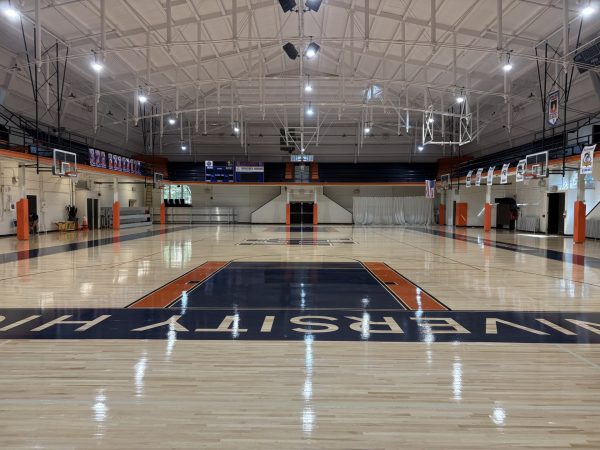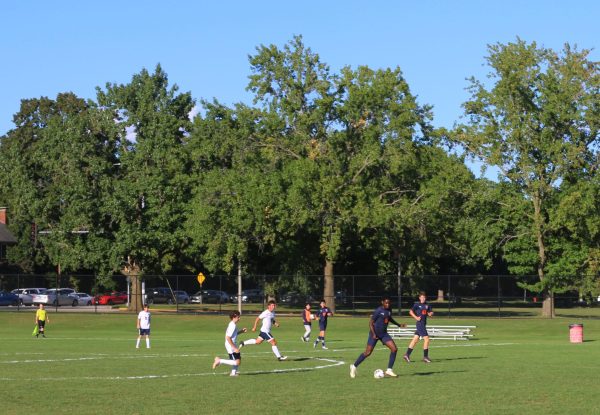Uni’s lack of socioeconomic diversity is a problem
I’ve started to realize that money can often buy knowledge. Money can buy a lot. It can buy nice cars, fancy clothes, healthy foods, country club memberships, international vacations and a multitude of objects that people with little money can’t afford. But money can also buy one of the grandest yearnings in today’s society: a head start in education. That is okay until schools start getting less diverse and children start to believe that opportunities only exist for the rich. In my opinion that problem has become ever more prevalent in this not diverse Uni.
It’s a fact that Uni’s racial and socioeconomic diversity fails to compare with Champaign-Urbana’s. According to Uni’s website, the “racial/ethnic makeup of the student body can be characterized as follows:
•Caucasian–63%
• Asian American–26%
• African American–5%
• Hispanic–5%
• American Indian–1%.”
According to Wikipedia, Champaign-Urbana is:
•67.8% White
•15.62% African-American
•0.3% Native American
•10.6% Asian
•0.1% Pacific Islander
•2.7% from other races, and 3% from two or more races.
A Gargoyle article published by Sam LeRoy and Even Dankowicz in 2013, revealed that 119 of the 324 Uni students who were attending Uni in 2013 lived in the 61822 area code. The median household income in the 61822 area is the highest in Champaign-Urbana. And when LeRoy conducted the study, only 25 kids lived in the 61820 area which has twice as many people as the 61822 area and has a poverty rate of almost 50%.
According to an article by Business Insider (and many other news sources), African Americans and Hispanics tend to make less money than Asians and Whites. That fact shines in the halls of Uni where there are barely any black or Latino students and the percentage of Asians, who tend to make more money, are much higher than CU’s 10.6%.
But is it a problem that Uni attracts kids of wealthier backgrounds? In my opinion, it affects the whole scope of Uni students.
The few kids in Uni who are lower middle class have a better chance of feeling like they’re different. To take an example, the fee for sports at Uni is $180. It’s as if it was expected that every single Uni student could afford that much money for a sport. These kids may start to believe that it’s normal for people to afford various things without tribulation. These kids may start to believe that it’s normal to be driving Mercedes cars or that it’s normal for people to attend the France trip with no worries about running low on money. But it’s not normal. In fact, Uni is so far from reality, that it’s the norm to believe that every single kid goes to a four year college or that a kid can easily swipe out 300 dollars for a summer camp.
But it’s not normal.
One of the nicest things about Uni is that it is not normal. We have a very close student to faculty ratio, we’re on the campus of one of the nation’s most prestigious school and our PE system is annoyingly really good. But one of things that makes us stand out is that we’re a public school with admissions. We essentially ‘filter’ out the ‘intelligent’ kids from a large pool of applicants. But because people are selected through their SSAT scores, their grades, their extracurriculars and things that money all has to do with, that makes our school not normal when it comes to diversity. And that’s bad.
There’s a reason why there’s such a focus on diversity these days. It’s because being in a diverse environment makes people more aware and less ignorant. This is not me putting the ‘ignorant’ label on Uni kids, but we definitely have less exposure to different races and different classes. When we see things on the news about raising the minimum wage, undocumented immigrants or Black Lives Matter, it can be irrelevant to us because we don’t have much connection to people affected by those things. The learning environment would be so much better if we had peers who came from those backgrounds to give us insight on what the real world is like.
This school is a public school. It’s supposedly open to all. But for those who walk through its gates as Latinos or blacks or lower middle class, it feels unwelcoming. And to those who walk through its gates with more in their pockets, it feels normal — even though being rich is not normal. It’s just normal at Uni.

